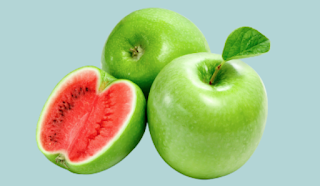Day 98 and 99 – Holding the tension
Paradox:
par·a·dox| ˈperəˌdäks | noun
• a seemingly absurd or self-contradictory statement or proposition that when investigated or explained may prove to be well founded or true: in a paradox, he has discovered that stepping back from his job has increased the rewards he gleans from it.
• a statement or proposition that, despite sound (or apparently sound) reasoning from acceptable premises, leads to a conclusion that seems senseless, logically unacceptable, or self-contradictory: a potentially serious conflict between quantum mechanics and the general theory of relativity known as the information paradox.
• a situation, person, or thing that combines contradictory features or qualities: the mingling of deciduous trees with elements of desert flora forms a fascinating ecological paradox.
Dialectic:
di·a·lec·tic| ˌdīəˈlektik | Philosophy noun (also dialectics) [usually treated as singular]
• the art of investigating or discussing the truth of opinions.
• inquiry into metaphysical contradictions and their solutions.
• the existence or action of opposing social forces, concepts, etc.
The ancient Greeks used the term dialectic to refer to various methods of reasoning and discussion in order to discover the truth. More recently, Kant applied the term to the criticism of the contradictions that arise from supposing knowledge of objects beyond the limits of experience, e.g., the soul. Hegel applied the term to the process of thought by which apparent contradictions (which he termed thesis and antithesis) are seen to be part of a higher truth (synthesis).
I was talking with my supervisor Bob Fox (see day 51) about individualism, structuralism, and social construction – and how to hold the tension between dialectics. We are not just socially constructed people or essential individuals – there is always going to be a tension around our separateness and our inseparability. Some of the dialectics that he and I spoke about are both the usefulness of “structures” or categorization and the dangers of “essentializing” that comes when we hold to categories too rigidly. (By the way, read a really great commentary on bell hooks’ text, Feminist theory: From margin to center, by Lindsay [2019]. Check it out!)
I then read this great paper on dialectical critical realism by Gunnarsson (2017). I told you I have a love/hate relationship with philosophy!
Anyway, I’m going to post a few quotes from the Gunnarsson paper here – what I particularly like about them is her attempt to help us to get out of our binary thinking – that things must be this way or that. She is proposing a way of thinking that holds the tension between binaries, between seeming opposites, and between things being static and evolving:
When Kimberlé Crenshaw (1991), who coined the term ‘intersectionality’, argued that gender must be analysed as intersecting with for instance race, so that gendered identities be seen as intrinsically racialized, the very term ‘intersectionality’ at the same time implies that the entities intersecting are distinct from one another in some way – otherwise they could not intersect.
For the most part intersectionality scholars in action treat categories like gender, race and class as somehow both separable and inseparable. (p.115)
On the dialectical critical realist view, being is an interconnected, open-ended whole, whose different parts and dimensions are both intrinsically connected and relatively autonomous from one another, due to processes of differentiation, stratification and emergence. Reality has a structure to it, but is also a processual becoming, and neither the structuredness nor the fluidity of being are absolute but become meaningful in relation to one another. (p. 117)
I think we need to take a humble stance towards our analytical tools, recognizing that
their way both of splitting up and holding the world together are never perfect, ultimately because of the processual character of reality. The structure, stratification and differentiation of reality make it viable as well as necessary to make the kind of distinctions in which human language excels. However, structuredness and boundedness exist only in dialectic with processes and flows, and these are difficult to grasp with analytical categories. Hence there can never be a perfect fit between knowledge and being. What also characterizes analytical language and thinking is its aversion to paradox and I think this lies behind much of the either/or thinking that I have mapped in this article. If we as intersectional theorists could accept the tensions and imperfections that are necessarily involved in theorizing, due to the clumsiness of the linguistic categories that we are bound to use, I think some of the conflicts among us might be recognized as largely semantic in kind. (pp. 125-126)
I hope tomorrow to talk about what I think this has to do with a “critical social justice lens for expressive arts therapy.”
Gunnarsson, L. (2017). Why we keep separating the ‘inseparable’: Dialecticizing intersectionality. European Journal of Women's Studies, 24(2), 114-127.
Lindsay, K. (2019). Black women and the intersectional politics of experience - Feminist theory: From margin to center. By bell hooks. New York: Routledge,[1984] 2015. 180 pp. 23.96 (paperback). Politics & Gender, 15(4).



Comments